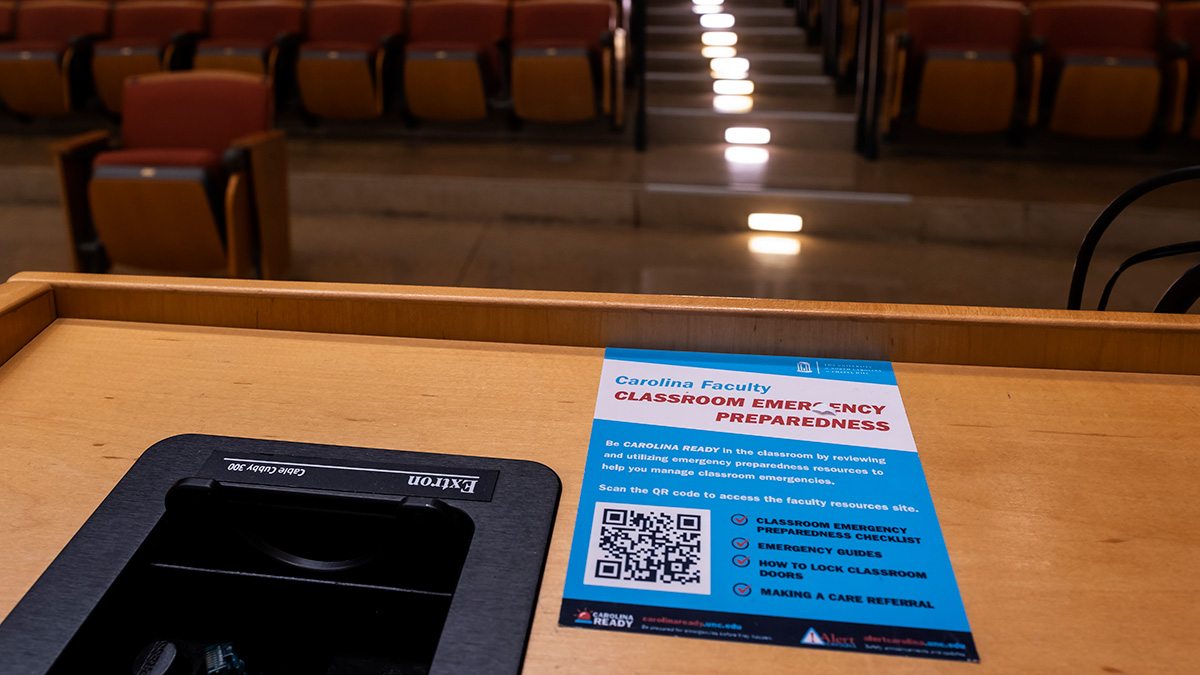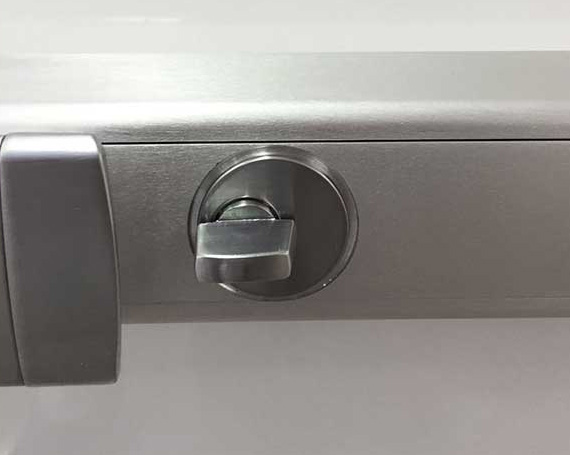New resources better equip faculty to handle classroom emergencies
With input from instructors, Campus Safety developed a preparation checklist, laid out possible emergency scenarios and more.

Luckily, it was a false alarm that led Kelly Hogan to think seriously and methodically about classroom safety.
In 2015, after receiving an alert about a possible armed person on campus, Hogan, associate dean of instructional innovation and STEM teaching professor in the College of Arts and Sciences, ushered students into a Genome Science Building lecture hall.
“I remember being really nervous that the building was all glass and that I couldn’t lock the doors to the lecture hall that seats 400 plus students,” Hogan said. The false alarm, she said, left her with a range of emotions — relief, hopelessness, frustration. “I turned some of those emotions into action and started making a fuss that I couldn’t lock the doors to my classroom.”
Hogan’s drive to better classroom safety helped inspire a collaboration between a faculty working group and various Carolina community partners — EHS Fire Safety, Emergency Management and Planning, UNC Police, Facilities, ITS, Dean of Students office, Counseling and Psychological Services — that led not only to general-purpose classrooms being fitted with locks that meet certain safety specifications but many other resources and measures for keeping classrooms safe in the event of a secure-in-place, evacuation, shelter-in-place, medical emergency or other scenario.
Resources for instructors include a safety checklist, door lock guide and scripts to help when addressing safety with students. In case of emergency, classrooms across campus are equipped with podium stickers featuring a QR code leading users directly to these resources. The linked resources and more can also be found on the Faculty Classroom Preparedness website.
Instructors aren’t trained safety experts, but they are classroom leaders, and students look to the person at the front of the class for guidance in case of emergency. All of these resources are meant to make instructors feel better prepared for an emergency so they can focus on their top priority — teaching.
“Having faculty, instructors and campus partners involved in classroom emergency preparedness is crucial for creating a safe learning environment. Their involvement helps ensure everyone can be prepared to act quickly and effectively together in emergency situations, ultimately leading to a safer and more resilient campus community,” said Darrell Jeter, director of emergency management and planning.
Classroom checklist
Campus Safety offers a one-page Faculty Checklist for Classroom Preparedness that can help simplify what may seem like a daunting task. Faculty can use the checklist to feel more confident and prepared for different types of emergencies.
Hogan was part of the faculty working group to help develop this checklist and uses it in her classrooms.
“I always think about exits and where they lead. If I had to direct a lot of students quickly out of the room, which exits would be most efficient and where would I be directing the students to?” Hogan said. “I often think about medical emergencies. I like to know if I have any EMTs in the room. Being a major (biology) that many pre-med students take, I almost always have an EMT on my undergraduate learning assistant team or in the class itself. I make sure to know who these people are because having a student faint or have a seizure is a far more likely scenario than an active shooter.”
Door lock guide
Of particular importance in preparedness is familiarity with different types of classroom door locks. The Classroom Door Lock guide provides visual and textual instructions on how to lock or unlock the different types of mechanisms. Faculty should practice locking and unlocking doors in their classrooms to ensure they’re ready in case of an emergency.

One style of push bar door lock on campus. (Campus Safety)
“I always think about locks,” Hogan said. “How do the locks work? Are there too many for me to lock on my own? Because I teach very large classes, the answer is always yes.”
Hogan teaches with eight undergraduate teaching assistants. She starts off the semester by learning together with her assistants how to lock and unlock the large doors at the back of the lecture hall she teaches in.
Script and situations
The Faculty Preparedness in the Classroom Guide helps classroom leaders better prepare to lead students and manage classroom emergencies. Originally a script for faculty to read at the beginning of a semester, it was expanded to incorporate feedback from faculty on additional information needs. The guide still includes the script for faculty in the event of an emergency, but it also walks through various scenarios and how to respond, including securing- and sheltering-in-place, evacuating a class and assisting a student with a disability.
“I’ve learned that faculty and students are in too many buildings unpredictably throughout a week to have routine drills to capture a ‘normal day.’ This means it is up to individuals to think more about their own safety in all their spaces,” Hogan said. “Most students and faculty have not thought about and really envisioned in their own classrooms what they might do if they needed to run and hide.”
Campus Safety has developed a University-wide public safety campaign — Carolina Ready — to help all members of the Carolina community Be Informed of how UNC-Chapel Hill communicates emergency information, Be Prepared with creating personal emergency plans, and Take Action when emergencies occur. Find more information on the Carolina Ready website.




